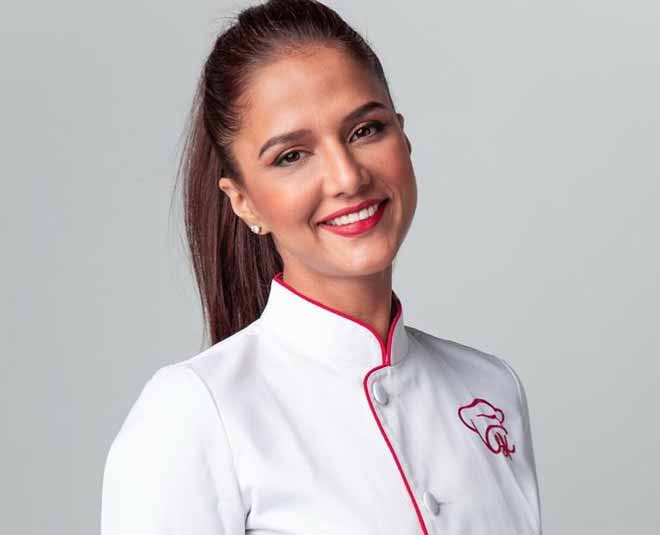
With so much discussion that goes around a healthy lifestyle, one conclusion that we have come to is that the key to a happy and wholesome life is having a balance in all spheres. Especially, when it comes to eating, a well-formed diet is imperative for the human body to thrive. We’ve heard our mothers and our grandmothers lay emphasis on a balanced diet and the way they would serve you your meals would reflect the same. There would be a proportionate amount of dal, sabzi, roti, raita ensuring that you get every element right in each of your meals.
You’ve heard of carbs, fat, protein, vitamins, and minerals and other nutrients important for your body. However, there are some specific elements that are the pillars of a balanced diet. Recently, a big question has been put out there: what is healthy and where do I find it? That is why, I, MasterChef Shipra Khanna took the topic up on Instagram, reminding you guys of all the things that you should be eating and the way you should be consuming it to make it extra healthy.
Don't Miss: Eat Like a Yogi, Think Like a Yogi: A Yoga Diet Based On Ayurvedic Principles

Here are the three pillars that I believe make or break a well-formed diet:
Have you wondered how oxygen reaches your organs including the brain? Well, it's iron that helps that transfer. The reason iron becomes essential for your body is because all the tissues and cells in your body depend on oxygen to function properly. The less oxygen is in your body, the more slowly they work. And, do you know what happens during the deficiency of iron in the body? Anemia, one of the most common nutrient deficiencies in India which women and girls particularly suffer from. Also, thanks to the monthly menstrual cycle and the loss of blood it causes. In fact, this makes it even more imperative for Indian women to consume twice as much iron.
The sad truth is also that women often end up consuming way lesser iron-rich foods than men. Sometimes a brain fog surrounds you when you do not eat the right amounts of food. Common signs are lethargy, tiredness, and a dire need for a sugar fix etc. Iron comes from red meat, beans, pulses, dried fruit, beetroot, lentils, peas and beans, whole grains, mulberry, amaranth, dark-green leafy vegetables, nuts and seeds, and fortified foods such as white flour products and breakfast cereals.
Don't Miss: Try MasterChef Shipra Khanna’s Simple Spiced Banana Bread Recipe

Iron intake has become a concern for vegetarians because plants usually have less iron than meat. It is also advised to cook in iron utensils, as iron gets released in the food and provides health benefits and gives a good surface to cook. In India, this practice has been very popular since ages! Maybe it's time to get back to our basics and where we all came from! Nutrients often interact with each other, mostly positively, but sometimes negatively. Iron absorption is hindered by tannins and phytates. Tannins are found in significant amounts in tea, coffee and red wine, and in smaller amounts in many other foods.
When the seed is intact, it is known as whole meal or whole grain. A lot of micronutrient from foods like flour are removed when you refine them. This also includes iron. You know why you are told to eat whole wheats? Not just because they have so much fiber to them, but because the minerals and vitamins are snatched away from the food if it is too refined.

Our bones are made up of calcium, therefore it is found abundantly in our body. This nutrient provides strength and calcium in the blood and is used for electrical reactions, such as muscle movement, nerve functioning and cell signaling. Calcium is naturally found in milk and in curd as well. I believe in consuming vitamins and minerals in its natural forms, and I recommend the same to everyone. Calcium is found in foods made from milk (curd, cheese), the small bones in fish, fortified products such as soya milk and calcium water, dark green leafy vegetables, and legumes.
Have you ever wondered why there is so much emphasis given to stepping out there and soaking in the sun? Well, it's because your body needs to absorb the vitamin D that the sun emanates. This allow our body to effectively consume calcium. It's not like the sun in itself gives us any vitamin D, but the presence of sunlight helps our skin produce some of it, much like plants make their food by photosynthesis in the presence of sun light. Because, our exposure to sunlight is getting reduced day-by-day, thanks to our urban lifestyle vitamin D deficiency in Indian has become relatively common. This problem is intensified since most of us have dark complexation that makes it more difficult to create this nutrient in the body. A vitamin D supplement from time to time with a prescription from your doctor is actually a good idea. So friends, let's get these three pillars back into our lives and make our life beautifully balanced!
To read more stories from Masterchef Shipra Khanna, stay tuned to HerZindagi.
Our aim is to provide accurate, safe and expert verified information through our articles and social media handles. The remedies, advice and tips mentioned here are for general information only. Please consult your expert before trying any kind of health, beauty, life hacks or astrology related tips. For any feedback or complaint, contact us at compliant_gro@jagrannewmedia.com.